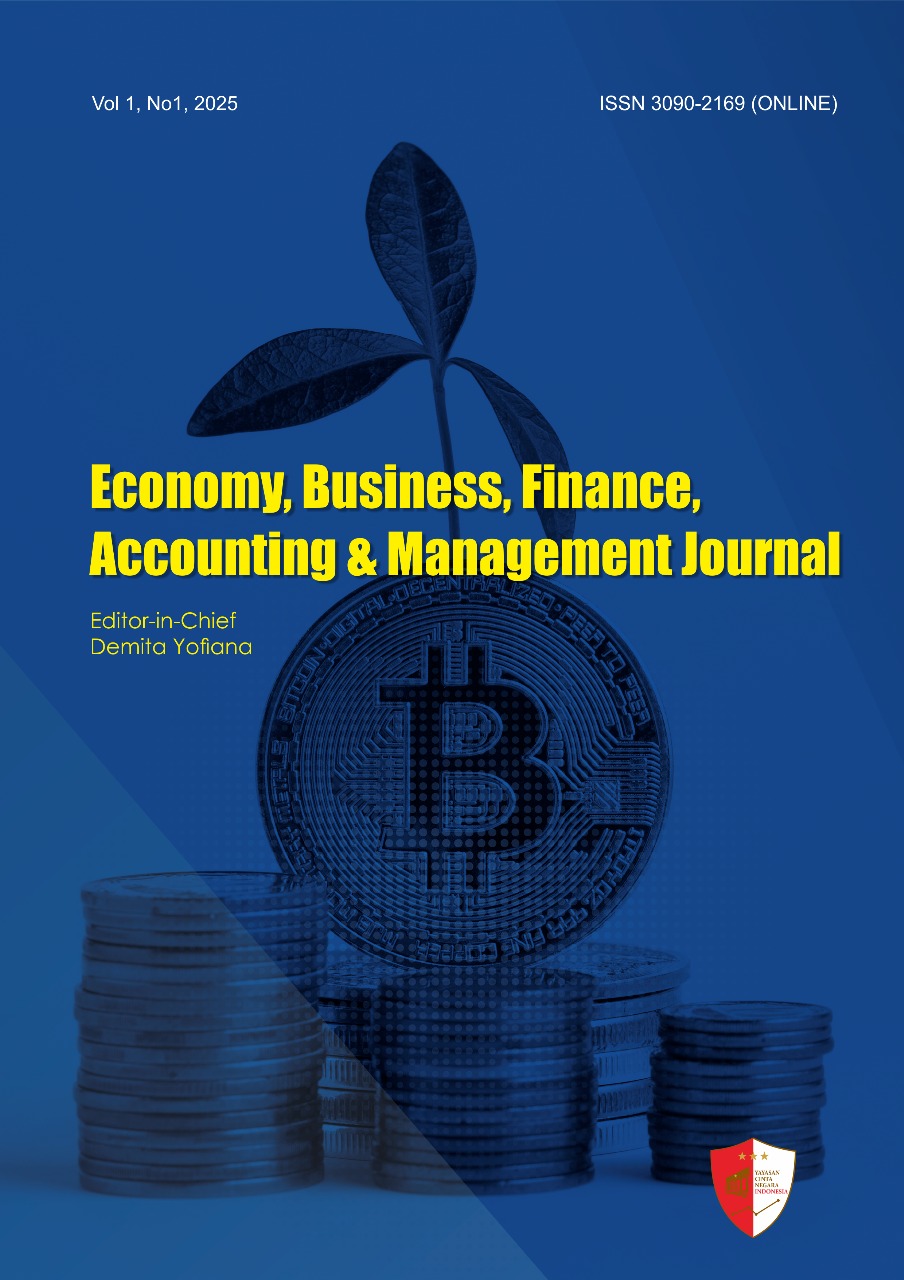Income distribution inequality and its implications for regional economic growth
Keywords:
Economic Growth, Gini Coefficient, Income Inequality, Inclusive Growth, Regional DevelopmentAbstract
Income distribution inequality remains a critical challenge in achieving sustainable and inclusive economic growth. This study examines the relationship between income inequality and regional economic growth, with a focus on identifying the mechanisms through which unequal distribution of income influences long-term development trajectories. Using panel data from multiple regions over a ten-year period, the research employs the Gini coefficient as a measure of inequality and real GDP growth rates as an indicator of economic performance. Econometric analysis is conducted using fixed-effects and generalized method of moments (GMM) estimations to address potential endogeneity issues. The findings reveal a non-linear relationship, where moderate inequality may initially stimulate investment and growth by concentrating capital among high-saving households, but excessive inequality tends to hinder growth through reduced aggregate demand, limited human capital development, and social instability. The study also finds that regions with better access to education, healthcare, and infrastructure exhibit greater resilience to the negative effects of inequality. Policy implications suggest that promoting equitable access to economic opportunities particularly through targeted fiscal policies, progressive taxation, and investment in social infrastructure can mitigate inequality without discouraging productivity and innovation. This research contributes to the ongoing discourse on inclusive growth strategies and underscores the need for region-specific approaches in addressing income disparities to foster balanced and sustainable economic development
References
Aghion, P., Caroli, E., & García-Peñalosa, C. (1999). Inequality and economic growth: The perspective of the new growth theories. Journal of Economic Literature, 37(4), 1615–1660.
Alesina, A., & Perotti, R. (1996). Income distribution, political instability, and investment. European Economic Review, 40(6), 1203–1228.
Alesina, A., & Rodrik, D. (1994). Distributive politics and economic growth. Quarterly Journal of Economics, 109(2), 465–490.
Atkinson, A. B. (2015). Inequality: What can be done? Harvard University Press.
Banerjee, A. V., & Duflo, E. (2003). Inequality and growth: What can the data say? Journal of Economic Growth, 8(3), 267–299.
Barro, R. J. (2000). Inequality and growth in a panel of countries. Journal of Economic Growth, 5(1), 5–32. Berg, A., & Ostry, J. D. (2011). Inequality and unsustainable growth: Two sides of the same coin? IMF Staff Discussion Note, 11/08. International Monetary Fund.
Birdsall, N., Ross, D., & Sabot, R. (1995). Inequality and growth reconsidered: Lessons from East Asia. World Bank Economic Review, 9(3), 477–508.
Bourguignon, F. (2004). The poverty-growth-inequality triangle. Indian Council for Research on International Economic Relations Working Paper No. 125.
Calderón, C., & Servén, L. (2010). Infrastructure and economic development in Sub-Saharan Africa. Journal of African Economies, 19(suppl_1), i13–i87.
Cheong, T. S., & Wu, Y. (2015). Regional income inequality in China. Applied Economics, 47(50), 5392–5404.
Deininger, K., & Squire, L. (1996). A new data set measuring income inequality. World Bank Economic Review, 10(3), 565–591.
Easterly, W. (2007). Inequality does cause underdevelopment: Insights from a new instrument. Journal of Development Economics, 84(2), 755–776.
Forbes, K. J. (2000). A reassessment of the relationship between inequality and growth. American Economic Review, 90(4), 869–887.
Galor, O., & Moav, O. (2004). From physical to human capital accumulation: Inequality and the process of development. Review of Economic Studies, 71(4), 1001–1026.
Galor, O., & Zeira, J. (1993). Income distribution and macroeconomics. Review of Economic Studies, 60(1), 35–52. Greenwood, J., & Jovanovic, B. (1990). Financial development, growth, and the distribution of income. Journal of Political Economy, 98(5, Part 1), 1076–1107. Kanbur, R., & Lustig, N. (2000). Why is inequality back on the agenda? Annual World Bank Conference on Development Economics, 285–306.
Kuznets, S. (1955). Economic growth and income inequality. American Economic Review, 45(1), 1–28.
Li, H., & Zou, H. (1998). Income inequality is not harmful for growth: Theory and evidence. Review of Development Economics, 2(3), 318–334.
Milanovic, B. (2016). Global inequality: A new approach for the age of globalization. Harvard University Press.
Ostry, J. D., Berg, A., & Tsangarides, C. G. (2014). Redistribution, inequality, and growth. IMF Staff Discussion Note, 14/02. International Monetary Fund.
Perotti, R. (1996). Growth, income distribution, and democracy: What the data say. Journal of Economic Growth, 1(2), 149–187.
Persson, T., & Tabellini, G. (1994). Is inequality harmful for growth? American Economic Review, 84(3), 600–621.
Piketty, T. (2014). Capital in the twenty-first century. Harvard University Press.
Quah, D. (1996). Regional convergence clusters across Europe. European Economic Review, 40(3–5), 951–958. https://doi.org/10.1016/0014-2921(95)00105-0
Ravallion, M. (2014). Income inequality in the developing world. Science, 344(6186), 851–855. https://doi.org/10.1126/science.1251875
Rodríguez-Pose, A., & Tselios, V. (2009). Education and income inequality in the regions of the European Union. Journal of Regional Science, 49(3), 411–437.
Stiglitz, J. E. (2012). The price of inequality: How today’s divided society endangers our future. W. W. Norton & Company.
Todaro, M. P., & Smith, S. C. (2020). Economic development (13th ed.). Pearson Education.
Van der Ploeg, F., & Poelhekke, S. (2009). Volatility and the natural resource curse. Oxford Economic Papers, 61(4), 727–760.
Voitchovsky, S. (2005). Does the profile of income inequality matter for economic growth? Journal of Economic Growth, 10(3), 273–296.
World Bank. (2020). World development report 2020: Trading for development in the age of global value chains. World Bank Group.
World Bank. (2022). World development indicators. https://databank.worldbank.org/source/world-development-indicators
Zhuang, J., Kanbur, R., & Rhee, C. (2014). Inequality in Asia and the Pacific: Trends, drivers, and policy implications. Asian Development Bank
Downloads
Published
Issue
Section
License
Copyright (c) 2025 Marshanda, Kinanti (Author)

This work is licensed under a Creative Commons Attribution-NonCommercial 4.0 International License.





